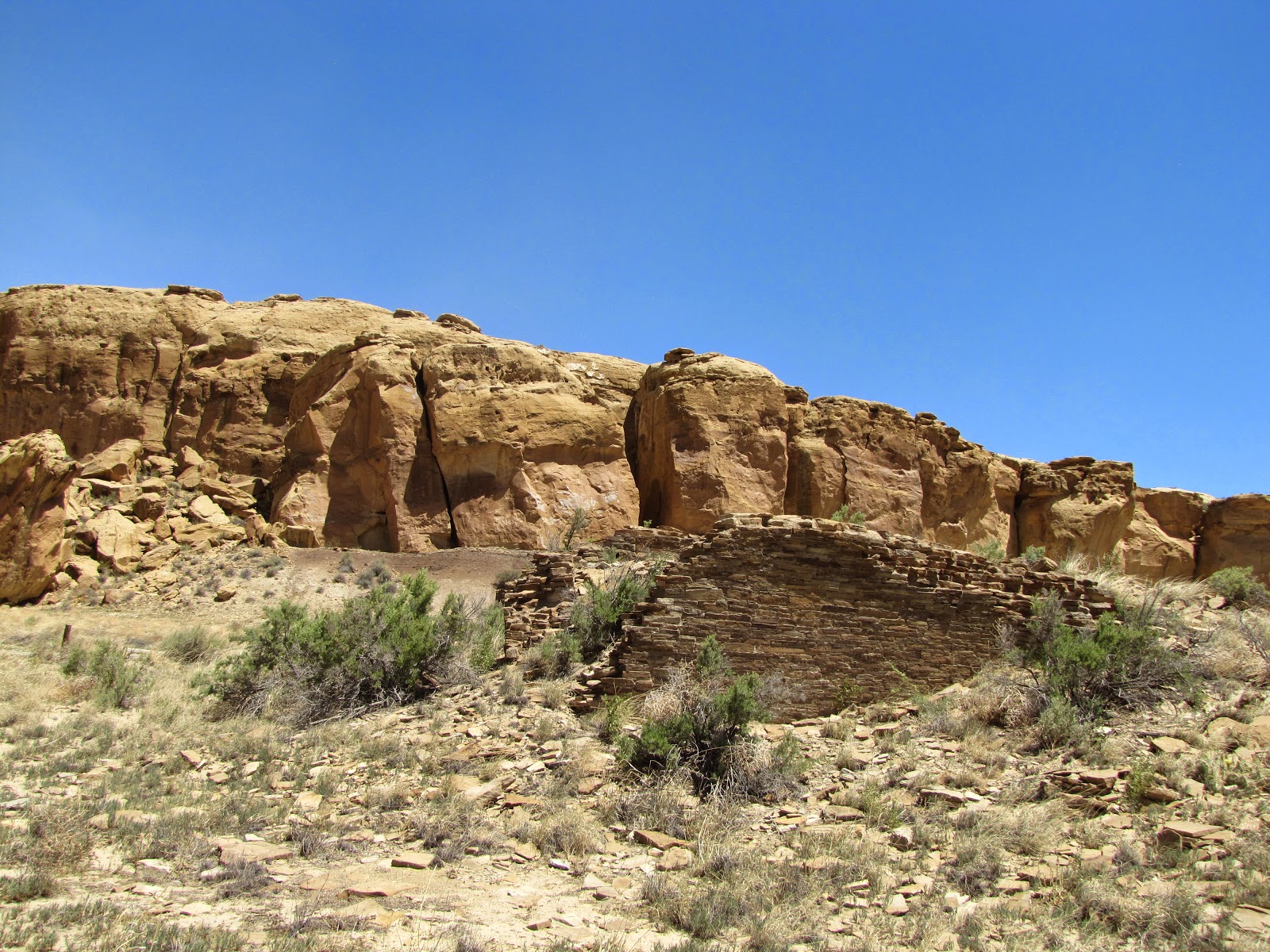Many generations before Christopher Columbus sailed the ocean blue, there was a thriving culture in Chaco Canyon. It is thought the Chacoan people began building in the mid-800s. This was not a people who lived in caves or tee-pees, but in massive multiple-story buildings with hundreds of rooms. Astronomical markers, communication features, and water control devices have been unearthed there. Historians think that this wasn't a traditional farming village, but a meeting place for ceremonies and trading. After about 300 years, building stopped and apparently, the people moved to another location.
I'll admit I may be a little obsessed with rock formations. I promise I won't show you as many as my physical geology students will see this fall!
Stairway built to the top of the formation.
The wooden beams were made with ponderosa pine, fir, and spruce, which had to be brought in from 50-70 miles away.
Remnants of Pueblo Bonito, which covered almost two acres, comprised of 650 rooms, and four stories high. Some of the walls were up to three feet thick.
Structures are positioned to take advantage of solar and lunar cycles.
Some petroglyphs.
The Chacoans were skilled masons, working with stone tools and mortar made from sand, silt, clay and water. I wonder if the men who built this wall imagined that it would be standing more than a thousand years later.
Chaco Canyon today is considered to be part of the sacred homeland of the Hopi, the Pueblo peoples of New Mexico, and the Navajo. I'm glad we got to see it.
I'll admit I may be a little obsessed with rock formations. I promise I won't show you as many as my physical geology students will see this fall!
Stairway built to the top of the formation.
The wooden beams were made with ponderosa pine, fir, and spruce, which had to be brought in from 50-70 miles away.
Remnants of Pueblo Bonito, which covered almost two acres, comprised of 650 rooms, and four stories high. Some of the walls were up to three feet thick.
Structures are positioned to take advantage of solar and lunar cycles.
Some petroglyphs.
The Chacoans were skilled masons, working with stone tools and mortar made from sand, silt, clay and water. I wonder if the men who built this wall imagined that it would be standing more than a thousand years later.
Chaco Canyon today is considered to be part of the sacred homeland of the Hopi, the Pueblo peoples of New Mexico, and the Navajo. I'm glad we got to see it.



















Comments
Post a Comment